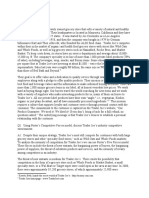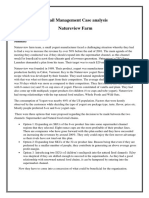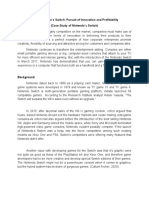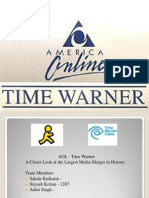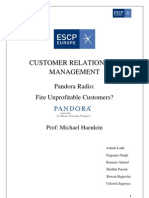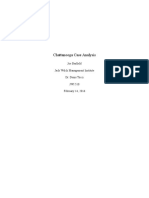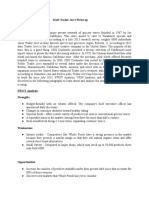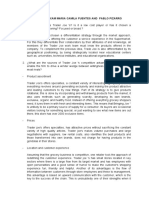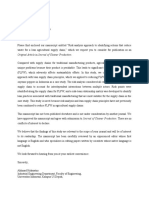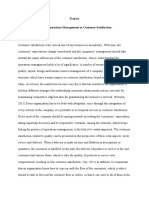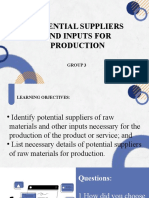100% found this document useful (1 vote)
662 views5 pagesTrader Joe's Strategic Insights
The document describes the history and operations of Trader Joe's. It began when Joe Coulombe was hired by Rexall and acquired a small chain from them. He later set up Trader Joe's with financing from Adohr Milk Farms. The first Trader Joe's opened in Pasadena. It was later acquired by Aldi North but Coulombe remained CEO until 1988. Trader Joe's has since expanded across the US and continues to grow. The document also analyzes Trader Joe's value chain, core competencies, sources of competitive advantage, and performs a SWOT analysis.
Uploaded by
Christabel ChooCopyright
© © All Rights Reserved
We take content rights seriously. If you suspect this is your content, claim it here.
Available Formats
Download as DOCX, PDF, TXT or read online on Scribd
100% found this document useful (1 vote)
662 views5 pagesTrader Joe's Strategic Insights
The document describes the history and operations of Trader Joe's. It began when Joe Coulombe was hired by Rexall and acquired a small chain from them. He later set up Trader Joe's with financing from Adohr Milk Farms. The first Trader Joe's opened in Pasadena. It was later acquired by Aldi North but Coulombe remained CEO until 1988. Trader Joe's has since expanded across the US and continues to grow. The document also analyzes Trader Joe's value chain, core competencies, sources of competitive advantage, and performs a SWOT analysis.
Uploaded by
Christabel ChooCopyright
© © All Rights Reserved
We take content rights seriously. If you suspect this is your content, claim it here.
Available Formats
Download as DOCX, PDF, TXT or read online on Scribd
/ 5









